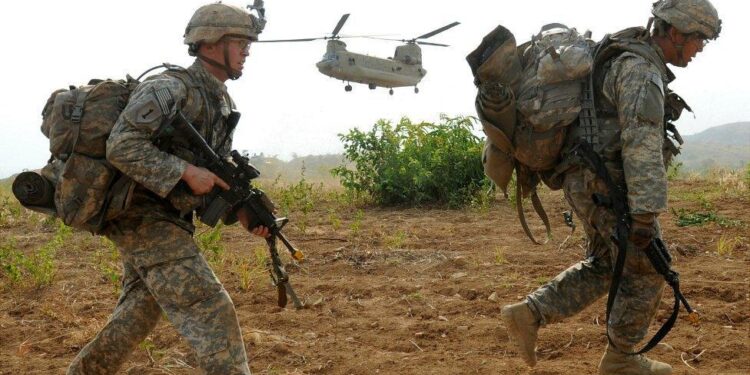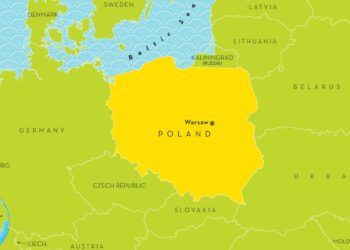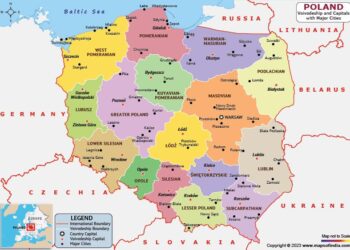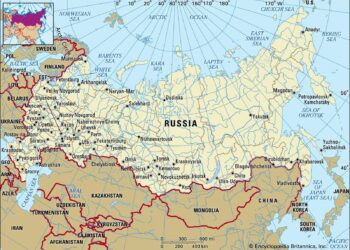The United States has announced plans to withdraw a portion of its troops stationed in Romania and along NATO’s eastern flank, according to reports from TVP World. This move marks a significant adjustment in the U.S. military posture in Eastern Europe amid evolving security dynamics in the region. The decision comes at a time of ongoing tensions with Russia and raises questions about the future of NATO’s collective defense strategy on its eastern borders.
US Announces Partial Troop Withdrawal from Romania and NATO Eastern Flank
The US Department of Defense has confirmed a strategic adjustment involving the reduction of its military presence in Romania and other NATO countries situated on the alliance’s eastern frontier. This partial withdrawal aligns with broader efforts to recalibrate forces following heightened tensions and evolving security dynamics in Eastern Europe. Officials emphasized that this move is not indicative of a diminished commitment to NATO’s collective defense but rather a tactical reallocation aimed at optimizing operational readiness and resource deployment across the region.
Key aspects of the troop redeployment include:
- Withdrawal of approximately 500 personnel from Romanian bases over the next six months.
- Reinforcement of rapid response units in Germany and Poland to maintain strategic balance.
- Continued support for training and joint exercises with NATO allies in the Eastern European theater.
| Location | Current Troop Levels | Post-Withdrawal Estimate |
|---|---|---|
| Romania | 1,200 troops | 700 troops |
| Poland | 3,500 troops | 3,700 troops (increase) |
| Germany | 7,000 troops | 7,200 troops (increase) |
Implications for Regional Security and NATO’s Military Strategy
The planned reduction of U.S. military presence in Romania and along NATO’s eastern flank introduces a complex set of challenges for regional security dynamics. With fewer American troops deployed, there is an increased onus on European NATO members to bolster defense capabilities and fill potential gaps in deterrence posture. This recalibration comes at a delicate time, given the persistent tensions near Russia’s western borders and evolving hybrid warfare threats. Furthermore, allies in Eastern Europe may interpret the drawdown as a signal to accelerate their own strategic autonomy initiatives, potentially reshaping the alliance’s collective defense ethos.
Key considerations moving forward include:
- Enhanced intelligence sharing and joint training exercises to maintain interoperability despite troop reductions.
- Increased investment in rapid response forces and advanced surveillance technologies by NATO members.
- Diplomatic engagement with regional partners to mitigate security vacuums and reassure vulnerable states.
- Adjustment in NATO’s military strategy emphasizing flexibility, cyber defense, and missile shielding capabilities.
| Aspect | Potential Impact | NATO Response |
|---|---|---|
| Force Presence | Reduced visible deterrence | Deployment of rapid reaction units |
| Regional Stability | Increased uncertainty among Eastern allies | Strengthened diplomatic support mechanisms |
| Alliance Cohesion | Pressure on European members to share burden | Enhanced joint operational planning |
Strategic Recommendations for Maintaining Stability Amid Shifting U.S. Military Presence
In light of the announced reduction in U.S. military personnel in Romania and across NATO’s eastern flank, it is imperative for allied nations to adopt a proactive approach to preserve regional security and deter potential aggression. Prioritizing enhanced intelligence sharing and joint training exercises will be critical to offset the decrease in direct U.S. troop presence. Strengthening diplomatic channels with both NATO members and neighboring states ensures continued cohesion and rapid response capabilities, mitigating any perception of vulnerability.
- Expand multinational military collaborations to diversify defense responsibilities.
- Invest in advanced surveillance and rapid deployment forces to maintain readiness.
- Engage in sustained diplomatic dialogue with Russia and other key actors to reduce tensions.
- Promote regional economic resilience to counter influence through non-military means.
| Recommended Action | Expected Outcome |
|---|---|
| Multinational Joint Exercises | Enhanced interoperability and force readiness |
| Border Security Technology Upgrades | Improved threat detection and deterrence |
| Diplomatic Confidence-Building Measures | Reduced risk of misunderstandings and escalation |
| Local Infrastructure Investment | Greater societal stability and economic security |
These strategic initiatives will serve as foundational pillars to maintain stability amid a shifting military landscape. By leveraging the strengths of individual NATO members and fostering a united front, the alliance can effectively adapt to evolving challenges without relying solely on U.S. troop deployments in the region.
In Retrospect
The planned withdrawal of some U.S. troops from Romania and other positions along NATO’s eastern flank marks a significant development in the alliance’s military posture amid evolving geopolitical dynamics. While the reduction reflects ongoing strategic recalibrations, NATO and its member states emphasize continued commitment to regional security and collective defense. Observers will be closely watching how this shift influences the broader security landscape in Eastern Europe in the coming months.















